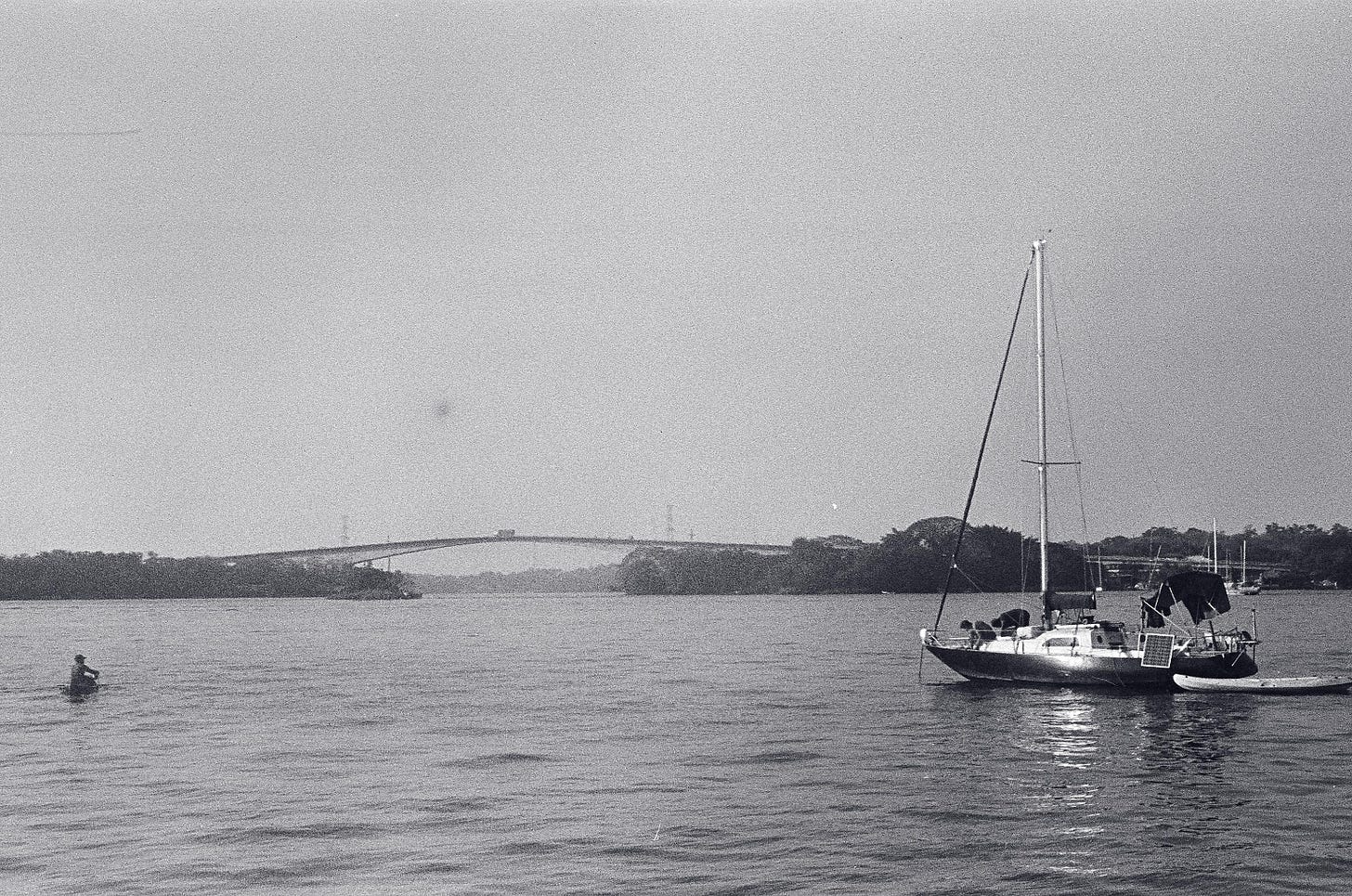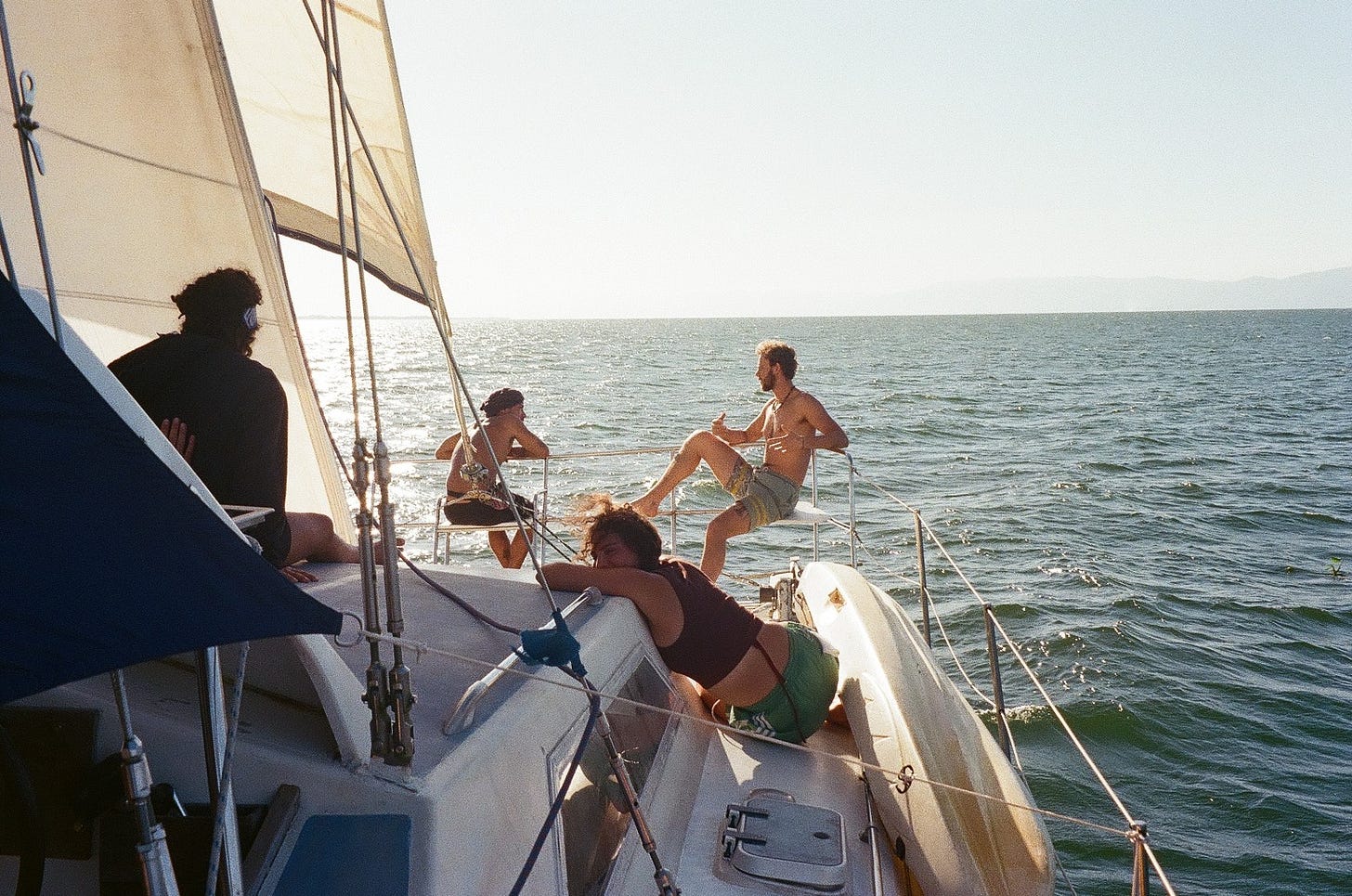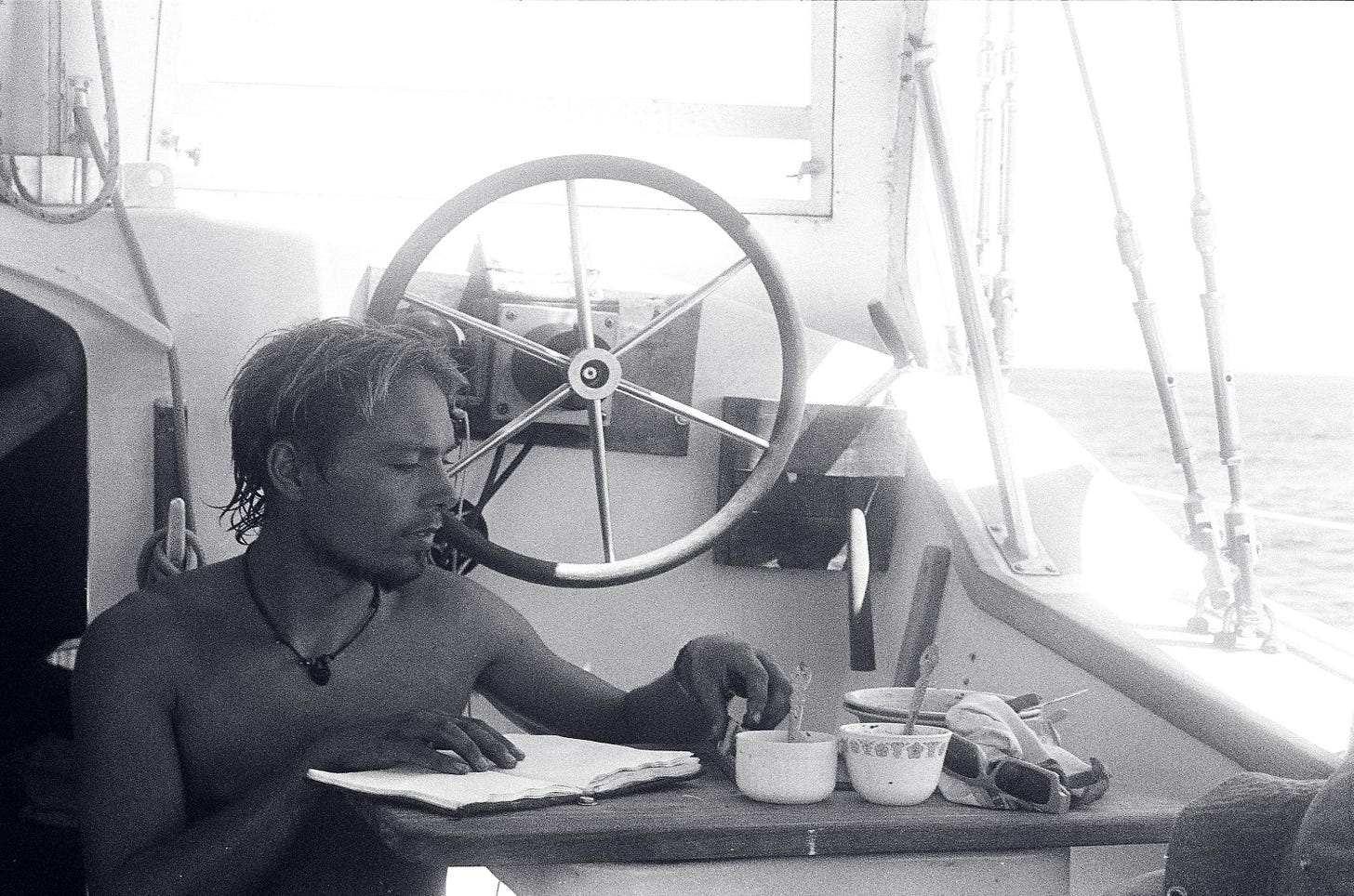“No one is doing this,” Daeli told us on one of those early days. His voice could be heard over the sounds of a small port city in the evening. The motors of boats competed with overhead eighteen-wheelers to the symphony of Latin music, broadcast from open bars and populated private docks along the banks. And, as is characteristic of a night in Guatemala, the air echoed with the barking of distant dogs engaged in endless debate. But from where we were, sailing still in freshwater then on that floating hunk of fiberglass, the churning of the river rose above it all, black water sucked away below us.
We were attempting to cross beneath a bridge in a narrow stretch of river that connects the lake from which we had come to the sea for which we were headed. The problem was that the wind blew precisely from the direction where we wanted to go, and between the grand cement pillars that descended from the tall bridge, our course allowed a minimal margin of error.
When sailing, you can angle anywhere except into the wind. If you steer too close to the wind, also known as entering the dreaded dead zone, somebody on your boat will scream “Accident!” as your sails luff and your speed plummets and you lose control of steering. In this circumstance you either save yourself in time, turning the wheel out of the wind while you maintain enough speed for the boat to obey, or you are forced to tack. Tack is the sailor’s term for turn, specifically such that the bow of the boat crosses through the wind, steering from one side of the dead zone to the other by passing right through. This requires various adjustments on board, notably changing which side the sails are on by pulling with frantic will on ropes wrapped around winches, hoping to gather the extent of the slack in time to precede the pressure of the wind’s upwind impact on loose fabric, to tighten the sails fully before the necessary strength becomes that which requires strained muscles and which wears down the soft skin of damp fingers and palms.
So, approaching the bridge, we maneuvered relentlessly. We tacked left and right to try to fit ourselves through, coming up short and letting the wind push us back again, starting over. Challenge was not limited to the direction of the wind and the width of the passage; we were fighting the current, too, which emerged from the shallows on either side and dragged us backwards with the flow tide of distant sea water rising. The failures persisted for hours. The sun set and the dark swallowed the day, and still we angled upwind, caught some speed, twisted the wheel as far as it could go, watched the bow swing, paddled at the back, switched the sails, over and over.
When we passed at last beneath the bridge, we arched our necks to watch the line of suspended highway move horizontal through the starry sky. We sailed then below red tuk tuk taxis speeding on asphalt and trucks carrying things like cows and the dismembered trunks of mortal trees, and we savored for a moment the precision of our labor, the success of our energy expended.
“Some people sail their whole lives and never do what you all just did,” Daeli addressed us, nine crew members whose only common characteristic was a total lack of sailing experience, as we sat deflated and folding in on ourselves in the cockpit. Exhaustion preyed on limbs unaccustomed to this level of exertion and spirits yet lacking a sailor’s stamina. “They just turn on their motors and cruise right through.”
Friend Ship–our twelve meter catamaran built in 1986 and navigating to this day with the same sails, now more patch than original nylon–has no motor. That is, in the most literal sense, what Daeli meant when he told us, no one is doing this. A motor means the ability to progress in dead wind, to control your speed steering up to a dock, to fight a strong current, to definitively avoid obstacles. Today the great majority of sailors opt for this added security. Daeli is an exception.
I was first in contact with Daeli during the fall of the previous year when I was working as a housekeeper at a bed and breakfast in the west of Ireland and loathed my boss and got in my head the idea to sail far away. I found him on a website that connects budget travelers with volunteer opportunities all over the world. Daeli’s listing for a sailing community in the Caribbean, although admittedly a bit unconventional, intrigued me, and though I ended up a happy waitress in Ireland, I saved his details for a later date. He is a forty-some-year-old Frenchman and something of a sailing purist, a dissident of the new age, a loyalist to an obsolete art. I did not know this before I arrived, on something of a whim, on his catamaran in a murky residential mangrove in Guatemala because, at that time, I did not know anything about sailing at all.
I also did not know, that night anchored on the seaside of the Río Dulce bridge, whether that sentiment–no one is doing this, a sentiment that evoked little at the time but would, over the coming months, continue to fill with meaning as to eventually overflow–was intended to instill pride or doubt, excitement or fear. I felt none of these things.
Thanks for reading! This piece was originally published under the title “About a Sea Stray” in Volume II of Duvu Magazine, a women’s arts and culture publication based in Philadelphia, PA. Find them on instagram and purchase a copy to see this essay in its physical spread.
This is the first installment of a five part essay. Read part two, part three, part four, and part five on my Substack!





I was even MORE impressed when I realised you did that in a cat. They are notoriously bad at sailing upwind. (I did wonder why you didn't wait for the wind and current to be in your favour, but at least you upped your sailing experience!) Beautiful, well-written story. Thank you for sharing.
i loved reading this, such beautiful writing too <3